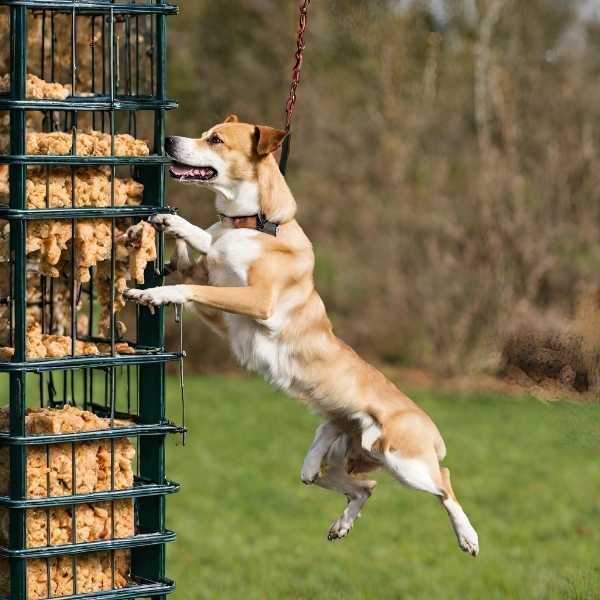Yes, dogs can eat suet in small amounts safely. It is made up of animal fat and bird seed, so it’s generally safe if in small amounts.
However, if your dog eats an excessive amount of suet, it can lead to tummy troubles like vomiting, diarrhea, and feeling full because it’s super high in fat. You can feed it as an occasional treat but it’s not something to give regularly.
Health Benefits of Suet for Dogs
Suet, a dense, nutrient-rich fat derived from beef or other animals, can offer several potential health benefits for dogs when consumed in moderation:
Nutrient-Rich: Suet has many important vitamins such as vitamins, A, b, C, and K that are very important for many body functions to work properly and for overall health.
Energy Source: The fat in the suit has lots of energy packed into it, which can be useful for active dogs who need a lot of energy.
Healthy Skin and Coat: The fat in the suit contains essential fatty acids that can help to keep your dog’s skin healthy and give their coat a nice shine.

Immune Support: Suet contains vitamins and antioxidants that can boost your dog’s immune system, which might help lower the chances of them getting sick or having infections.
Palatability: Your dog can like the taste of suet and it can eat its regular diet completely and also take its medication when it is mixed in the diet.
Potential Health Risks of Suet for Dogs
Digestive Issues: Suet has a lot of fat, and this can be tough for dogs to digest. If they eat a lot of it, they might end up with stomach issues like vomiting and diarrhea.
Weight Gain: Just like eating any fatty food too much, suet can also make your dog gain weight and lead to obesity. Being overweight is linked to different health problems like diabetes and heart issues.

Mold Risk: Bird seed, including suet, can get moldy, and that’s not good for dogs. Mold contains some toxic substances that can be risky for your dog’s health.
Choking Hazard: Suet cakes or blocks might have hard pieces in them, and that can be dangerous for dogs. Especially if they try to swallow big bits without chewing them properly, it could lead to choking.
How to Feed Suet to Your Dog?
When you are introducing suet to your dog’s diet, it’s essential to follow a safe and gradual process to avoid potential digestive issues or allergies. Here are steps to ensure a smooth transition:

1. Consult Your Vet: Before you make any dietary changes for your dog, consult with your veterinarian. They can provide you a guidance based on your dog’s specific health needs and dietary requirements.
2. Start Slowly: To introduce, you have to start feeding small amounts first. Mix small amounts of suet with your dog’s regular food. Begin with a minimal ratio of suet to make sure your dog handles it well.
3. Monitor for Allergies: You must keep a close eye on your dog for any signs of allergies or adverse reactions. Common allergy symptoms include itching, skin rashes, digestive problems, or changes in behavior.
